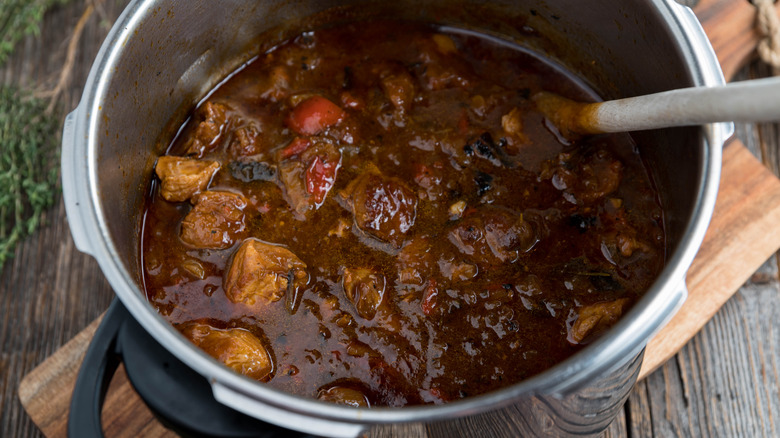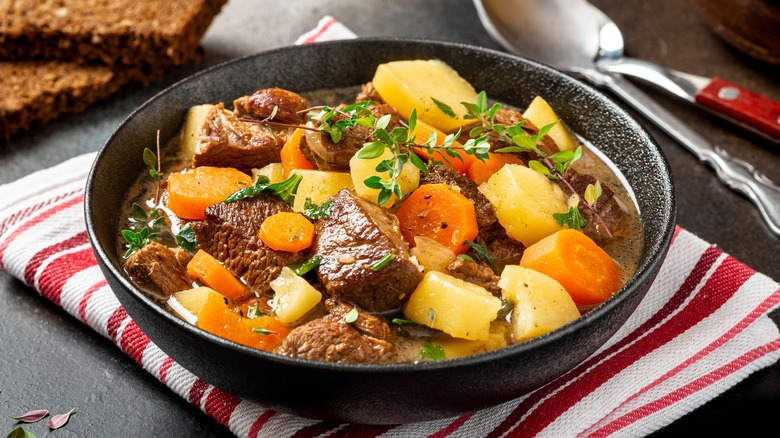The Rule For Adding Thickeners When Pressure Cooking A Cut Of Meat
If you're new to pressure cooking with meat and confused about when to add thickeners, like cornstarch, arrowroot, and gelatin, we've got you covered. The general rule of thumb is to add thickening agents to the pressure cooker after the meat is cooked, and there a few reasons why. Most importantly, if you add them before pressure cooking, they will thicken the liquid inside the chamber, reducing its volume. A smaller volume of liquid, be it stock, water, or broth, will hamper, or even hinder, the cooker from reaching pressure quickly.
The longer it takes for the cooker to reach pressure, the greater the risk that the food touching the base of the pot will scorch, lending your meal an unpalatable burnt flavor (and making the washing up harder). It's also a bit of a guessing game because you won't know how much liquid is left in the chamber until it de-pressurizes and can be safely opened.
You'll have greater control over the thickness of your meat liquid, stock, or gravy by adding thickeners at the end of the pressure cooking process. Remember, it's easier to thicken a stew to your liking with a roux or slurry once cooking is complete. It's much trickier to loosen an overly thick sauce without adding more liquid and diluting the concentrated flavors in your dish.
Other reasons to add thickener at the end of the cooking process
Did you know there's only about 5% evaporation of liquid in a pressure cooker? This is because of its special tightly fitting lid. This brilliant feature minimizes nutrient loss and allows the food inside to retain its flavor, but it also means you can't get inside the cooker again until all the steam is released. Bear in mind that almost the same amount of liquid will be present in the pressure cooker at the end of the cooking time as you poured in at the start, unless a thickener, like potato starch, corn flour, or agar is accidentally incorporated.
Stirring the thickener into the pot after the meat is cooked allows it to gently simmer until the remaining liquid reaches the correct consistency. This method gives you control over the texture of your velvety curries, warming goulashes, and comforting stews because you can see the viscosity of the liquid change in real time. It's useful to note that prepared sauces and canned products can have thickeners in them too. If possible, avoid adding them to your pressure cooker at the start to maintain the level of liquid inside the chamber.
Now you've got the lowdown on pressure cookers and thickeners, why not get those creative juices flowing and get cracking on making some unctuously soft beef brisket, tender oxtail, or lightning-speed round roast?

